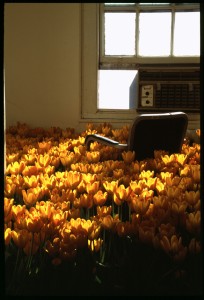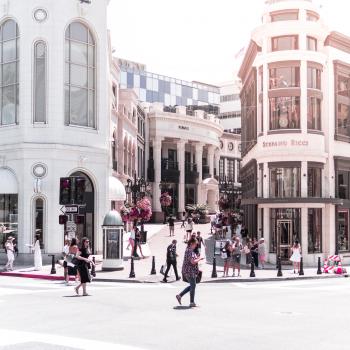 There’s something about the midday nature of the appointment that gives it a furtive cast: The putting on of mom-like clothes, stockings and “better” shoes, garnet lip gloss and a comb pulled through my hair, to give the appearance that I am a more organized person than I actually am.
There’s something about the midday nature of the appointment that gives it a furtive cast: The putting on of mom-like clothes, stockings and “better” shoes, garnet lip gloss and a comb pulled through my hair, to give the appearance that I am a more organized person than I actually am.
The keys clatter in the quiet as I lock the door, get in the car, and drive out of the neighborhood, careful to make sure I have the directions and the insurance card.
All the empty houses appear deserted and drowsy: everyone’s at work or school, and even the homeschoolers are hard at work by the kitchen table, their younger siblings laid down for early afternoon naps.
Then I’m on the ribbon of highway that carves through the as-yet-ungentrified decay of Washington, D.C.’s East Side—blessedly empty, with neither traffic nor construction, the now-obsolete RFK Stadium spun out on the right like a spectacular piece of road kill.
I love the steadying narcotic of driving like this: “[T]he freeways become a special way of being alive…the extreme concentration required in Los Angeles seems to bring on a state of heightened awareness that some locals find mystical” reads a quote from Reyner Banham’s Los Angeles: The Architecture of Four Ecologies, which I found in an essay on Joan Didion, whose novel Play It As It Lays is what I am trying to remember as I plow through the Nation’s Capital.
Then, before I know it—because there is no traffic—I’ve spun off myself—off a cloverleaf and onto a surface road that is clustered with mid-century, mid-rise apartment towers. Collectively, there are perhaps hundreds of these, off every exit of the Beltway, and aside from the barest variations—Virginia looks marginally newer and more big-boxy, Maryland grittier and more industrial—you could be in Chevy Chase or Springfield and not know the difference.
I park in the flat lot of one of these, its asphalt glittering, venture through the hushed and mirrored lobby and past the office door, and proffer my insurance card to the woman behind the desk.
This is an intake appointment with a psychiatrist on behalf of my son, for whom we have finally decided, after a year, to seek ADHD medication. It’s an in-network practice, thank God, so there are no Waldorf toys, Ski magazines, or Scandinavian teak. It strikes me as I wait that there are probably psychiatrists’ offices like these in every one of these mid-rise apartment buildings off the Beltway, and the thought both amuses and troubles me.
I sit amid this feeling of being nowhere and no-place, oddly happy: It is the kind of environment where I feel perfectly at home. Then the doctor beckons me through the door into his office: I sink into the chair opposite his desk, into the bourbony light cast through the half-closed blinds. I begin recounting family history and the results of the neuropsych evaluation.
I look at him, crouched over the pad on which he’s taking notes, and with a rush find myself falling in love: He is septuagenarian, with a kindly face, no doubt in his last years of practice. There is a yellowed diploma from an Ivy League university on the wall, and on top of one of the desk’s piles is an unexpected NIV Bible.
It’s true, I’m happily married, but now I want to hold his hands, to feel those cushioned doctor palms on my bare shoulders. The crinkles at the edges of his eyes make me want to weep.
Everyone who has read anything I have written has heard that my father died when I was young—ad nauseam, a critic once emailed me—and that is true, I know, but the lines between fathers and would-be lovers have never been entirely clear to me. If there is one thing I know how to be, it is the lost daughter, and I have replicated fathers in the oddest of authorities, from philosophy professors to car mechanics.
I am held steady now, I think, savoring the momentary stasis. It is as though the fragmentary pieces of myself have floated back together in the amber light. “I’ll see you back with your son on Thursday,” he says. I float from the office and back out into the still-bright afternoon.
With your son. And this is where, suddenly, I find the image of myself that I’ve so neatly nurtured—that Didion persona, that lost and desperate daughter—flirts a little too closely with the idea of “performing femininity” that theorist Judith Butler outlined in Gender Trouble, which I learned about in a Bookslut article about, guess who, Joan Didion: “…gender is an identity tenuously constituted in time, instituted in an exterior space through a stylized repetition of acts.”
It is a vanity, I realize now, that scrap of girl I carry like a carapace over the unformed woman that I am. And that it is time to let that girl go; it is time, as Paul said, to put away childish things. It is the great fortune I will need to give away to get to the Kingdom. I am now, instead, the mother with rounded hips to tote burdens, and I will guide the steering wheel confidently under my hands, my son by my side, two days hence.
It is my ascesis to overcome my childhood. To be supplanted and subsumed by the little boy with the kshatriya temperament and the boundless will, which with wisdom my husband and I must seek to form.
But it is sad, nonetheless, to let that conception go—it is like the persona of John Berryman’s “The Ball Poem,” this time female:
Soon part of me will explore the deep and dark
Floor of the harbor…I am everywhere,
I suffer and move, my mind and my heart move
With all that move me, under the water
Or whistling, I am not a little [girl].
A native of Yazoo City, Mississippi, Caroline Langston is a convert to the Eastern Orthodox Church. She is a widely published writer and essayist, a winner of the Pushcart Prize, and a commentator for NPR’s “All Things Considered.”
Art Pictured: Anna Schuleit Haber. BLOOM, 2003. 28,000 flowers in bloom. Recorded sound. Installation at the Massachusetts Mental Health Center.











